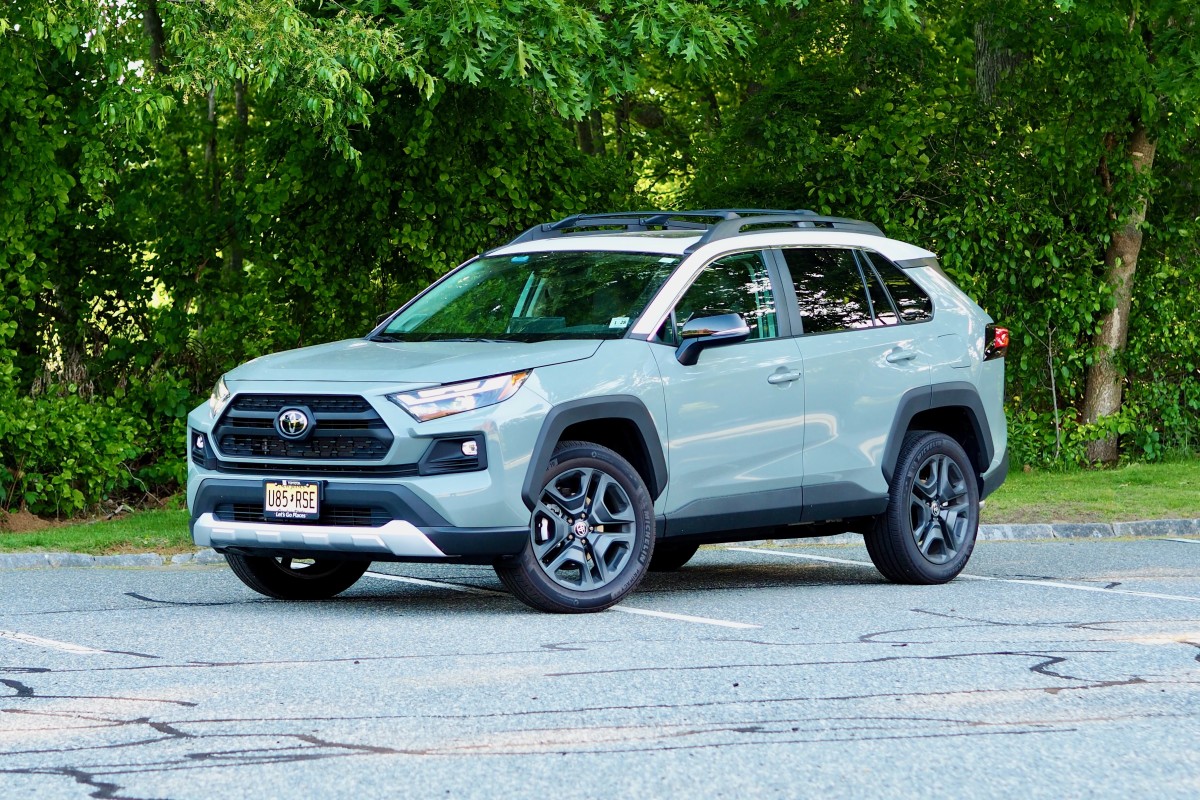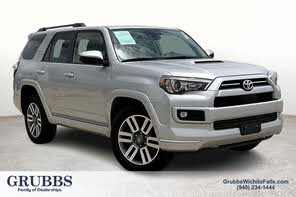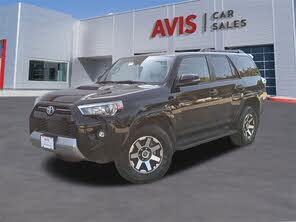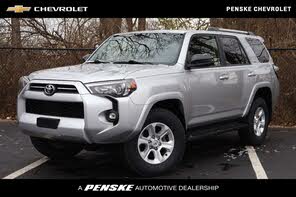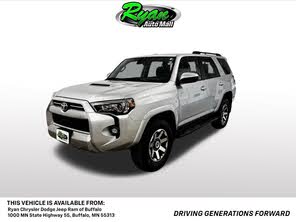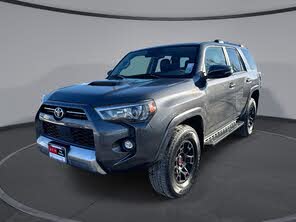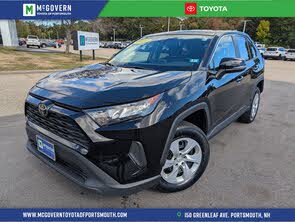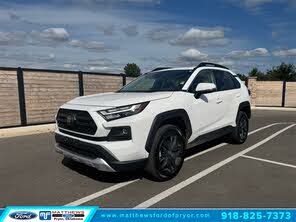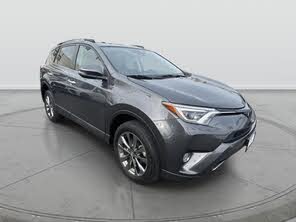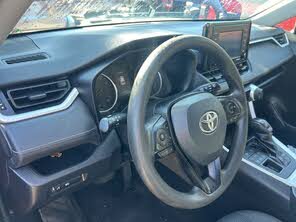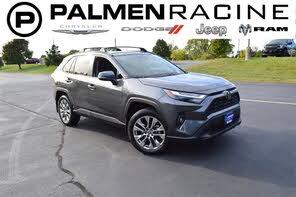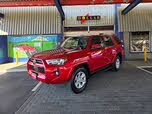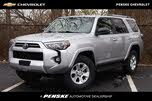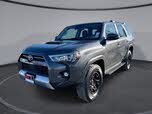Toyota 4Runner vs Toyota RAV4
Overview | |
Years produced1984-Present | Years produced1996-Present |
MSRP$41,270 | MSRP$31,900 |
Listings9349 | Listings9478 |
Ratings & Reviews | |
User Reviews | User Reviews |
Expert reviews7.7 out of 10 | Expert reviews6.8 out of 10 |
Pros
Cons
| Pros
Cons
|
Reviews SummaryAfter a very long 15 years, we finally got a new Toyota 4Runner with more capabilities, power, comfort, and technology. It's also more efficient thanks to a new hybrid option and more composed on pavement, but it remains a solid all-terrain vehicle to extend your adventures further. Verdict: Toyota doesn't throw out the fomula with its newly redesigned 4Runner. Instead, the 2025 model keeps many of the features shoppers have loved for over a decade, while also adding a more contemporary selection of four-cylinder powertrains. | |
Reviews SummaryThe sixth-generation Toyota RAV4 now comes with more choice, including three distinct design themes, three powertrain and drivetrain options, and seven trim levels. It has a hybrid drivetrain as standard, offering a claimed 44 mpg combined, along with more standard features, a quicker operating system, and improvements across the board to bolster its bestselling position. Verdict: The good gets better, but the RAV4's lineup is confusing enough to need a Venn diagram. | |
Popular Features & Specs | |
Seating Capacity7 | Seating Capacity |
Engine | |
Engine Name2.4L 278 hp I4 | Engine Name |
Torque317 lb-ft @ 1700 rpm | Torque |
Horsepower278 hp @ 6000 rpm | Horsepower |
Drivetrain4X2 | Drivetrain |
Interior | |
Seating Capacity7 | Seating Capacity |
Safety | |
Front Crash Overall4 | Front Crash Overall |
Side Crash Overall5 | Side Crash Overall |
Dimensions & Capacity | |
Cargo Space48.4 cu ft | Cargo Space |
Curb Weight4455 lbs | Curb Weight |
Height72.6 in | Height |
Length194.9 in | Length |
Width78.0 in | Width |
Wheelbase112.2 in | Wheelbase |
Maximum Payload895 lbs | Maximum Payload |
Number of doors4 | Number of doors |
Maximum Towing Capacity6000 lbs | Maximum Towing Capacity |
Standard Towing Capacity6000 lbs | Standard Towing Capacity |
Overview | ||
Years produced | 1984-Present | 1996-Present |
MSRP | $41,270 | $31,900 |
Listings | ||
Ratings & Reviews | ||
User reviews | ||
Expert reviews | 7.7 out of 10Read full review | 6.8 out of 10Read full review |
Pros & cons | Pros
Cons
| Pros
Cons
|
Summary | After a very long 15 years, we finally got a new Toyota 4Runner with more capabilities, power, comfort, and technology. It's also more efficient thanks to a new hybrid option and more composed on pavement, but it remains a solid all-terrain vehicle to extend your adventures further. Verdict: Toyota doesn't throw out the fomula with its newly redesigned 4Runner. Instead, the 2025 model keeps many of the features shoppers have loved for over a decade, while also adding a more contemporary selection of four-cylinder powertrains. | The sixth-generation Toyota RAV4 now comes with more choice, including three distinct design themes, three powertrain and drivetrain options, and seven trim levels. It has a hybrid drivetrain as standard, offering a claimed 44 mpg combined, along with more standard features, a quicker operating system, and improvements across the board to bolster its bestselling position. Verdict: The good gets better, but the RAV4's lineup is confusing enough to need a Venn diagram. |
Video | ||
Popular Features & Specs | ||
Seating Capacity | 7 | |
Engine | ||
Engine Name | 2.4L 278 hp I4 | |
Torque | 317 lb-ft @ 1700 rpm | |
Horsepower | 278 hp @ 6000 rpm | |
Drivetrain | 4X2 | |
Interior | ||
Seating Capacity | 7 | |
Safety | ||
Front Crash Overall | 4 | |
Side Crash Overall | 5 | |
Dimensions & Capacity | ||
Cargo Space | 48.4 cu ft | |
Curb Weight | 4455 lbs | |
Height | 72.6 in | |
Length | 194.9 in | |
Width | 78.0 in | |
Wheelbase | 112.2 in | |
Maximum Payload | 895 lbs | |
Number of doors | 4 | |
Maximum Towing Capacity | 6000 lbs | |
Standard Towing Capacity | 6000 lbs | |

By: CarGurus + AI
At CarGurus, our team of experienced automotive writers remain at the heart of our content operation, conducting hands-on car tests and writing insightful guides that are backed by years of industry experience. To complement this, we are harnessing AI to make our content offering more diverse and more helpful to shoppers than ever. To achieve this, our AI systems are based exclusively on CarGurus content, ratings and data, so that what we produce is both unique to CarGurus, and uniquely helpful to car shoppers.

